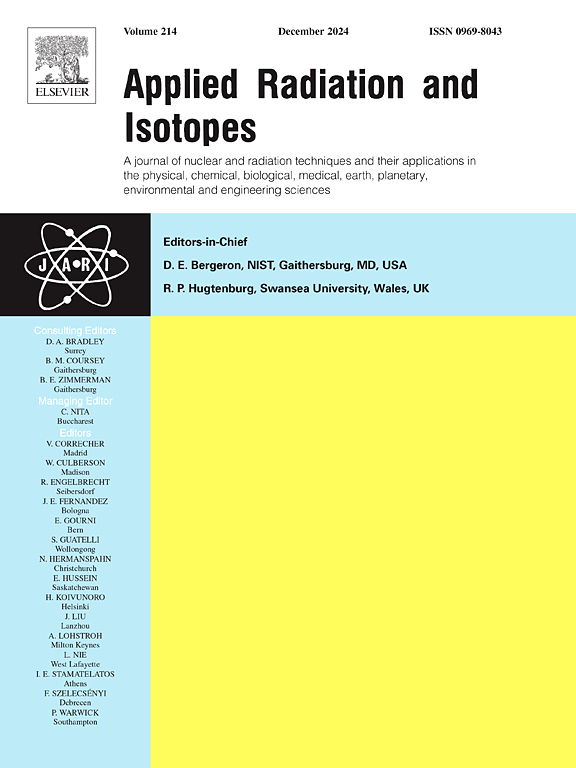Determination of Westcott g-factors for the assay of non-1/v nuclides using k0-NAA
IF 1.6
3区 工程技术
Q3 CHEMISTRY, INORGANIC & NUCLEAR
引用次数: 0
Abstract
This study examines the impact of the Westcott g-factor on the concentration of elements like In, Ir, Re, Yb, Eu and Lu, measured using neutron capture reactions (n,γ), specifically focusing on those reactions, whose thermal neutron capture cross-sections (σ (n,γ)) deviate from the conventional '1/v' behaviour. These measurements are quantified using k₀-based neutron activation analysis. The Westcott g-factor for the non-1/v nuclides was calculated using the characterized neutron temperature (Tn) at PFTS irradiation channel of KAMINI reactor. This computation involved establishing a correlation between g(Tn) Vs Tn, spanning a range from 0 to 100 °C, derived from the latest ENDF/B-VIII.0 nuclear data library. NJOY21 code package modules like RECONR (Resonance Reconstruction) and BROADR (Doppler Broadening) were used to process the neutron capture cross-section at different temperatures. The impact of g(Tn) on the Lu concentration was found to be highest at 81% and least for the Re at 0.2% using 185Re isotope.
k0-NAA法测定非1/v核素中Westcott g因子。
本研究考察了Westcott g因子对In, Ir, Re, Yb, Eu和Lu等元素浓度的影响,使用中子俘获反应(n,γ)测量,特别关注那些热中子俘获截面(σ (n,γ))偏离传统“1/v”行为的反应。这些测量使用基于k 0的中子活化分析进行量化。利用KAMINI反应堆PFTS辐照通道的特征中子温度(Tn)计算了非1/v核素的Westcott g因子。该计算涉及建立g(Tn) Vs Tn之间的相关性,跨越0到100°C的范围,来自最新的ENDF/B-VIII。0核数据库。采用RECONR (Resonance Reconstruction)和BROADR (Doppler broadband)等NJOY21码包模块对不同温度下的中子俘获截面进行处理。利用185Re同位素,发现g(Tn)对Lu浓度的影响最大(81%),对Re浓度的影响最小(0.2%)。
本文章由计算机程序翻译,如有差异,请以英文原文为准。
求助全文
约1分钟内获得全文
求助全文
来源期刊

Applied Radiation and Isotopes
工程技术-核科学技术
CiteScore
3.00
自引率
12.50%
发文量
406
审稿时长
13.5 months
期刊介绍:
Applied Radiation and Isotopes provides a high quality medium for the publication of substantial, original and scientific and technological papers on the development and peaceful application of nuclear, radiation and radionuclide techniques in chemistry, physics, biochemistry, biology, medicine, security, engineering and in the earth, planetary and environmental sciences, all including dosimetry. Nuclear techniques are defined in the broadest sense and both experimental and theoretical papers are welcome. They include the development and use of α- and β-particles, X-rays and γ-rays, neutrons and other nuclear particles and radiations from all sources, including radionuclides, synchrotron sources, cyclotrons and reactors and from the natural environment.
The journal aims to publish papers with significance to an international audience, containing substantial novelty and scientific impact. The Editors reserve the rights to reject, with or without external review, papers that do not meet these criteria.
Papers dealing with radiation processing, i.e., where radiation is used to bring about a biological, chemical or physical change in a material, should be directed to our sister journal Radiation Physics and Chemistry.
 求助内容:
求助内容: 应助结果提醒方式:
应助结果提醒方式:


